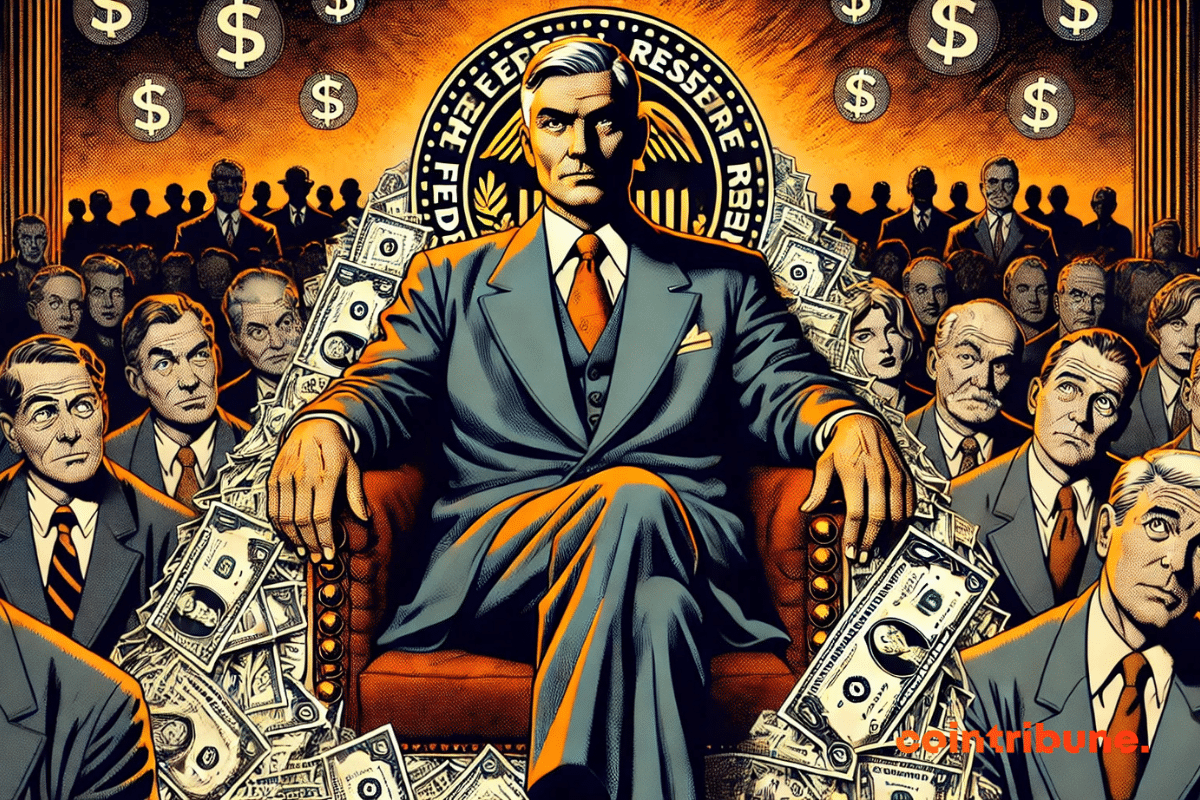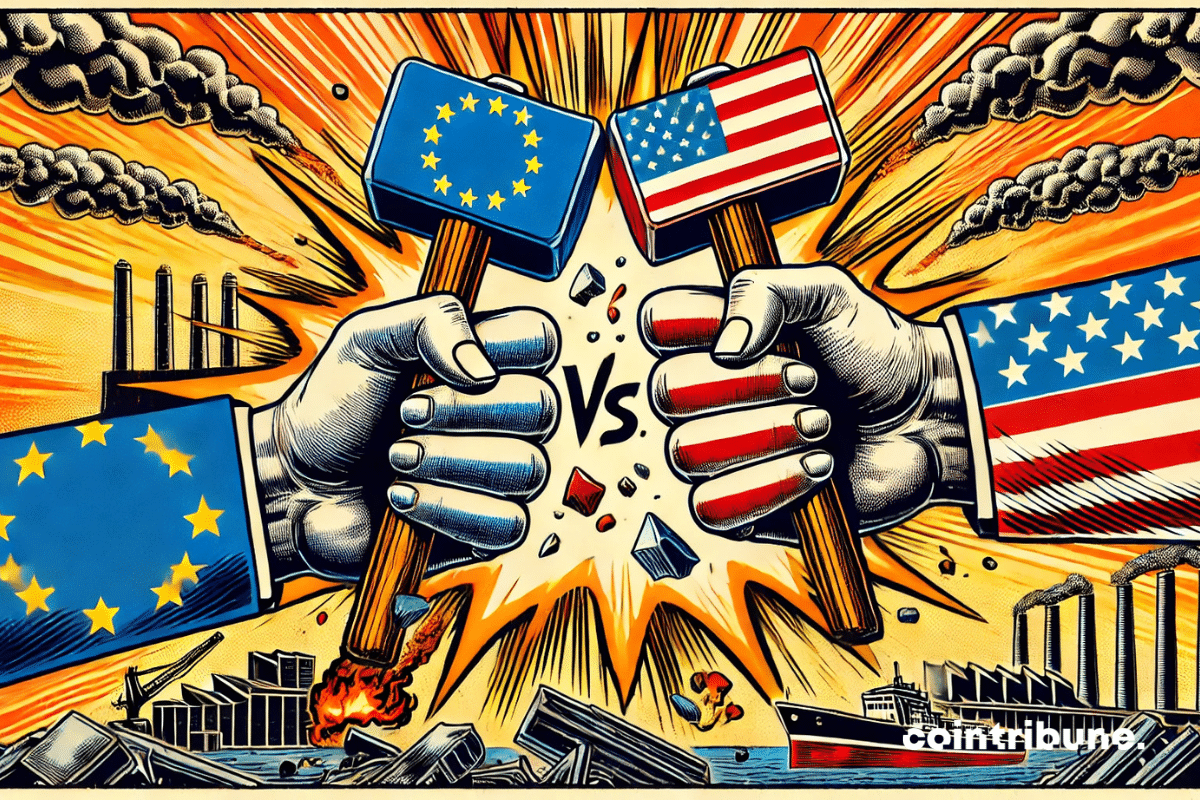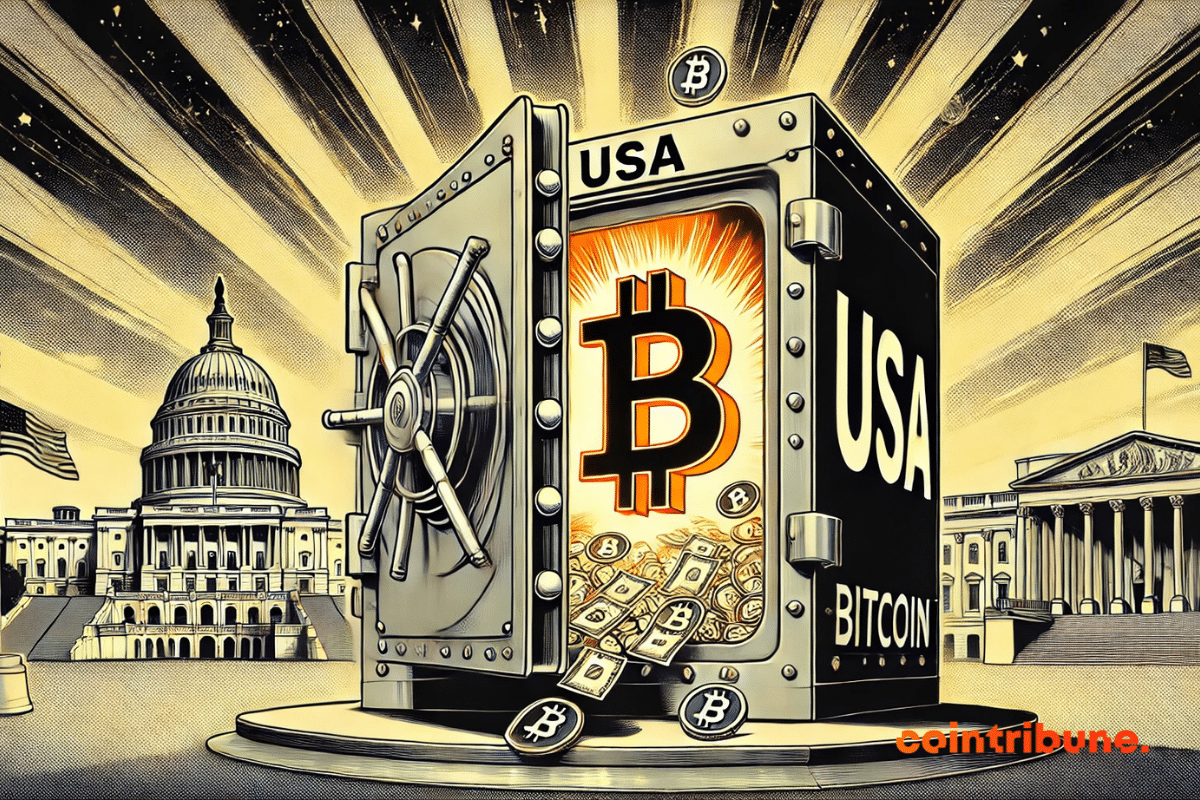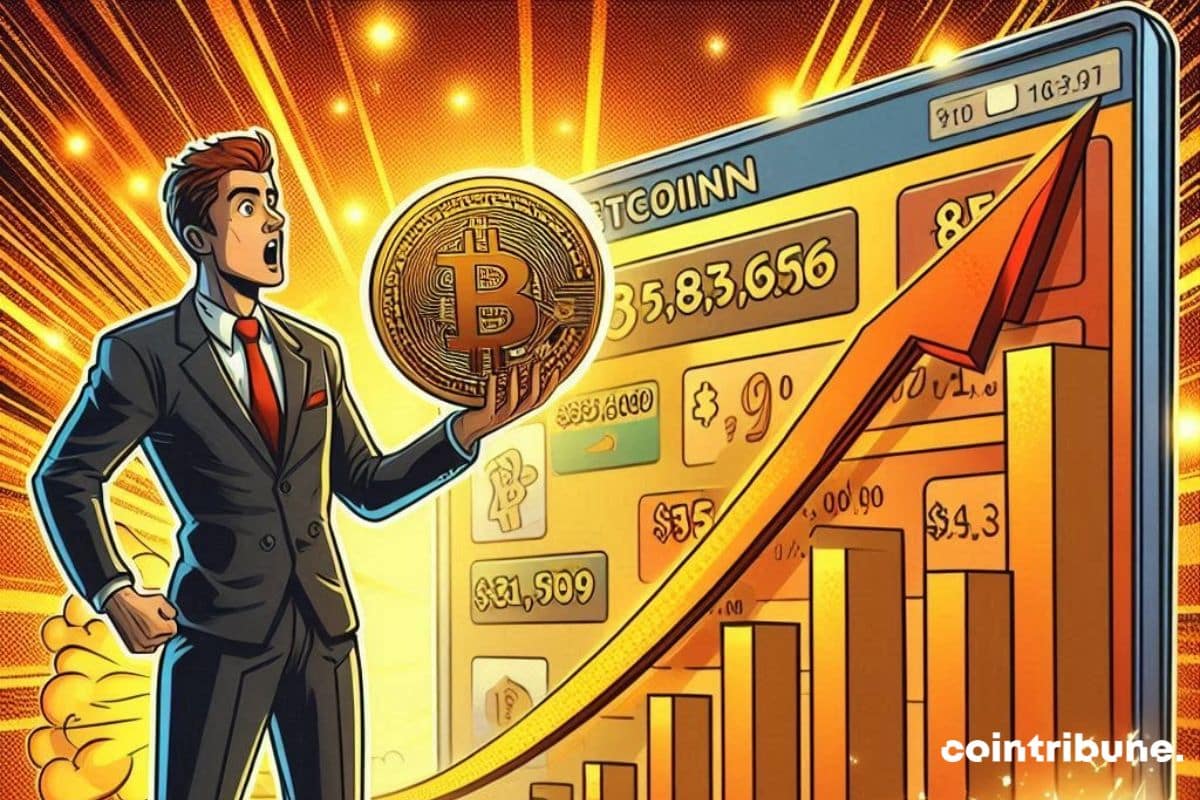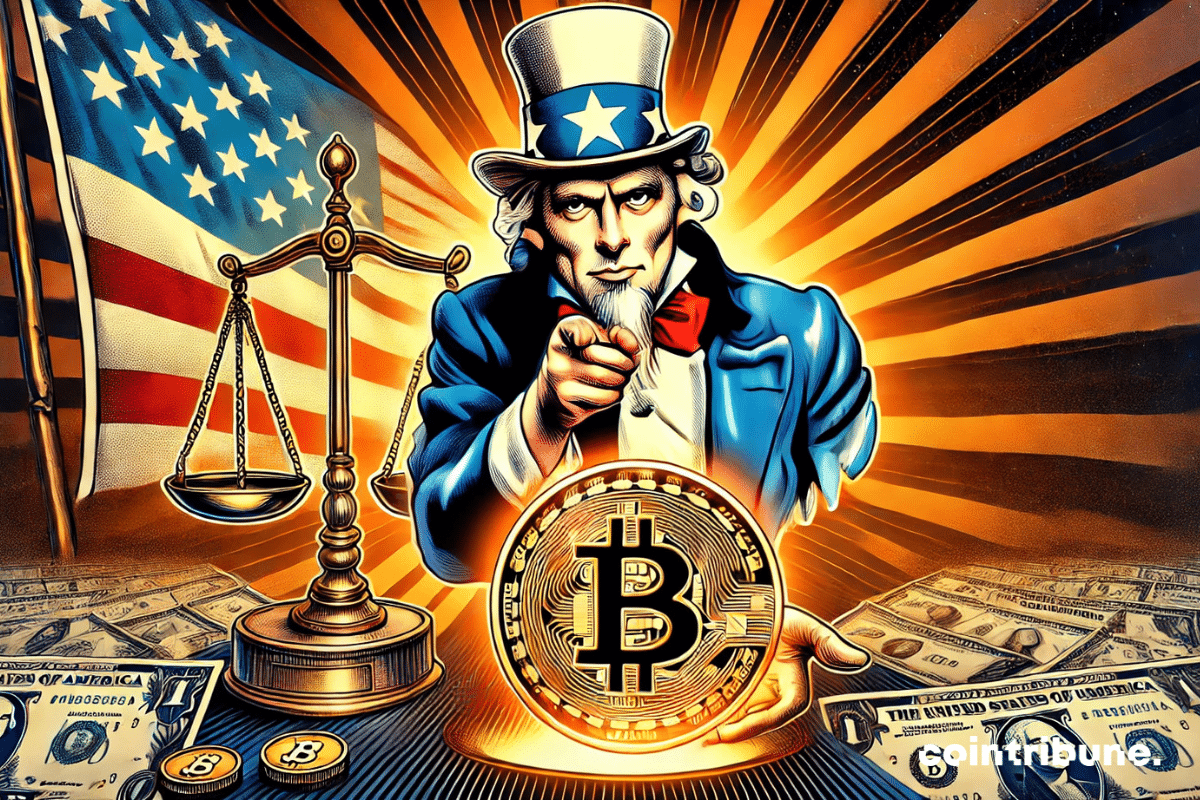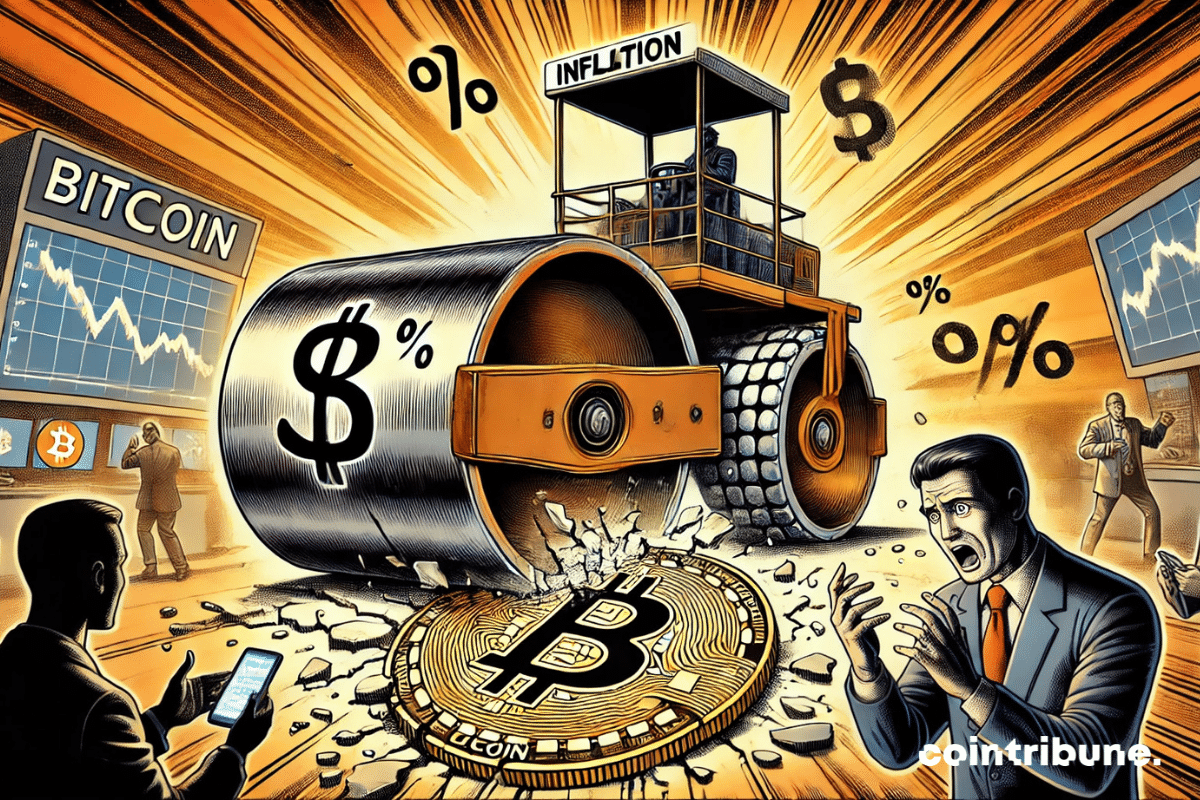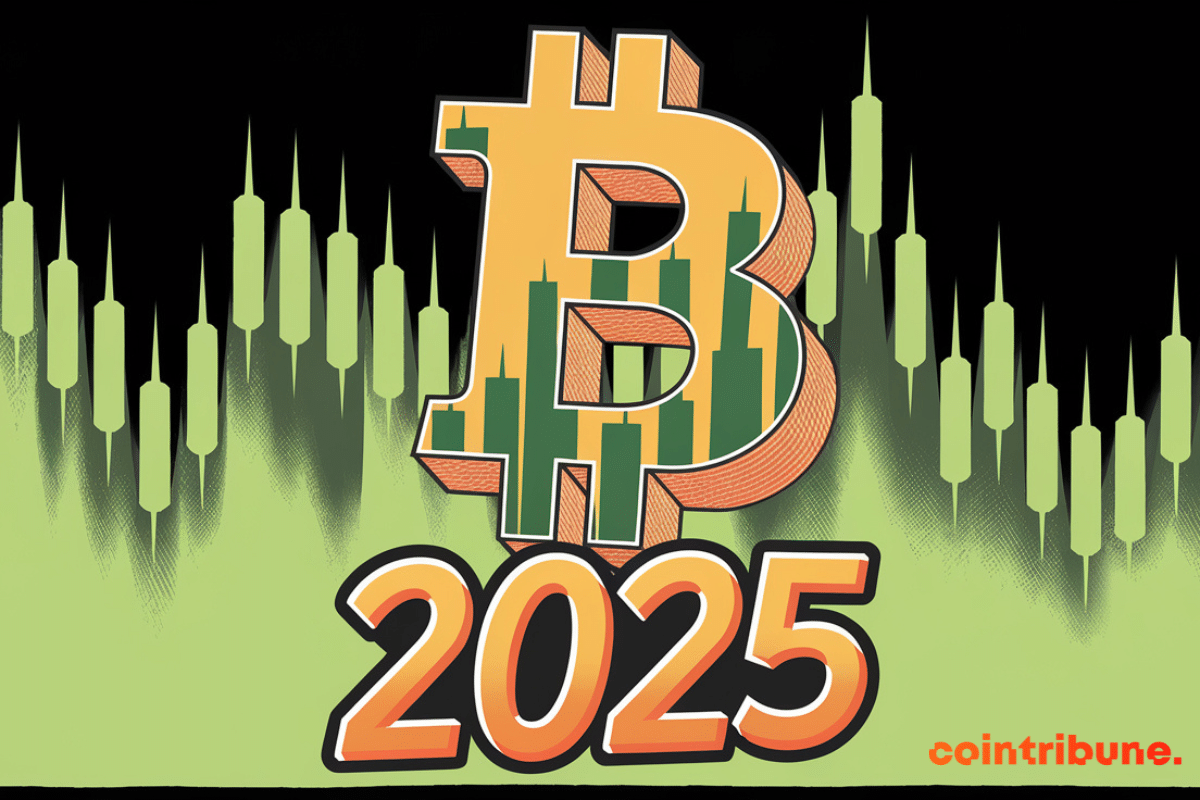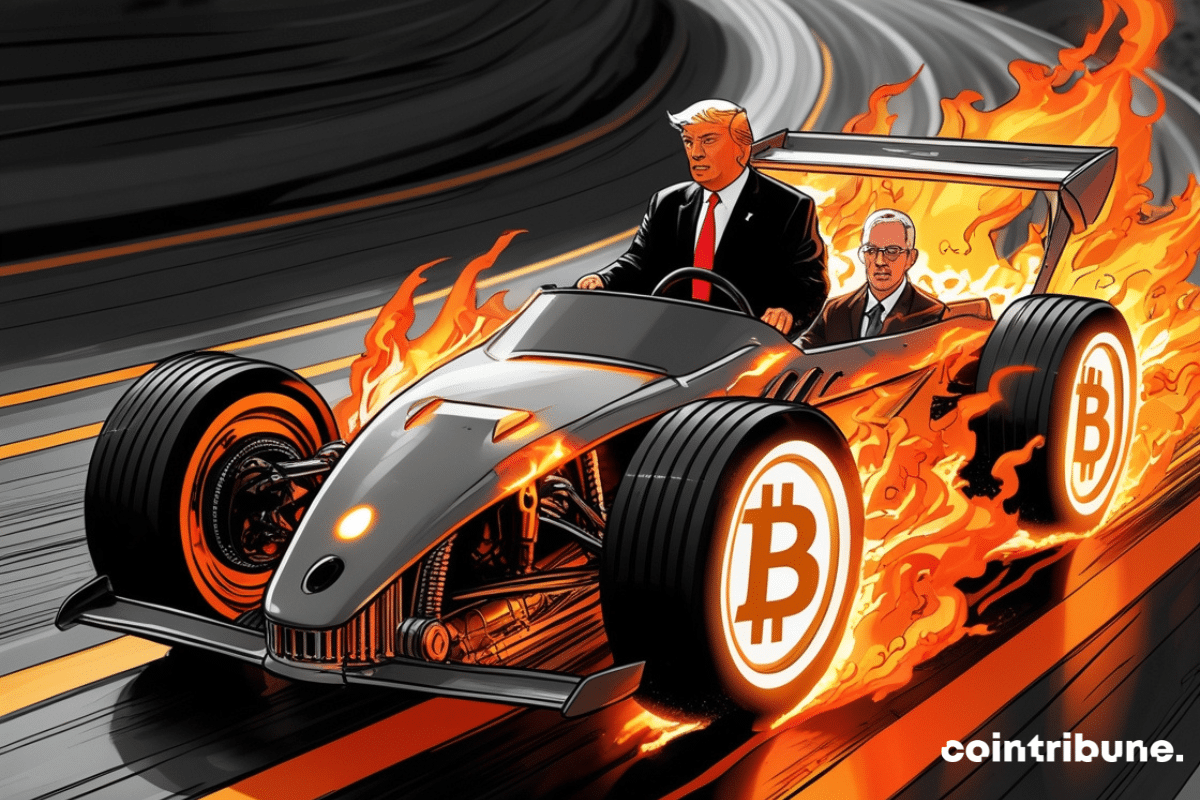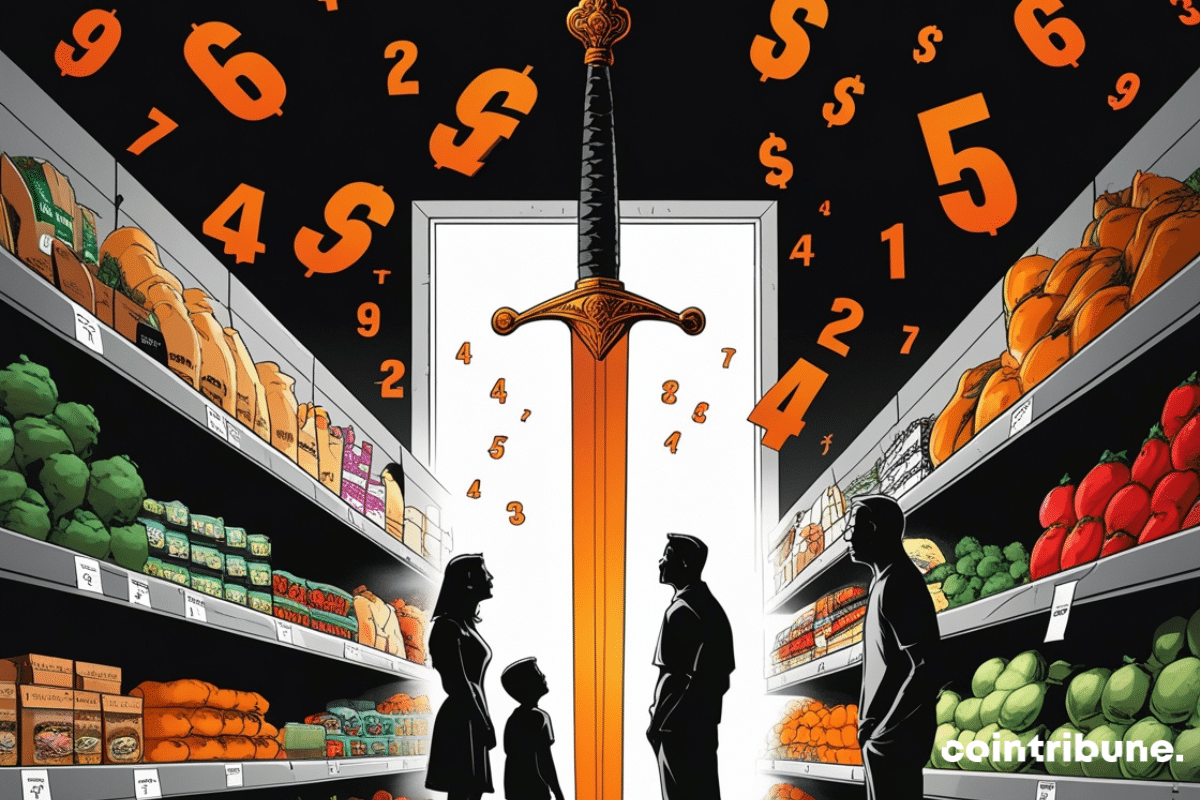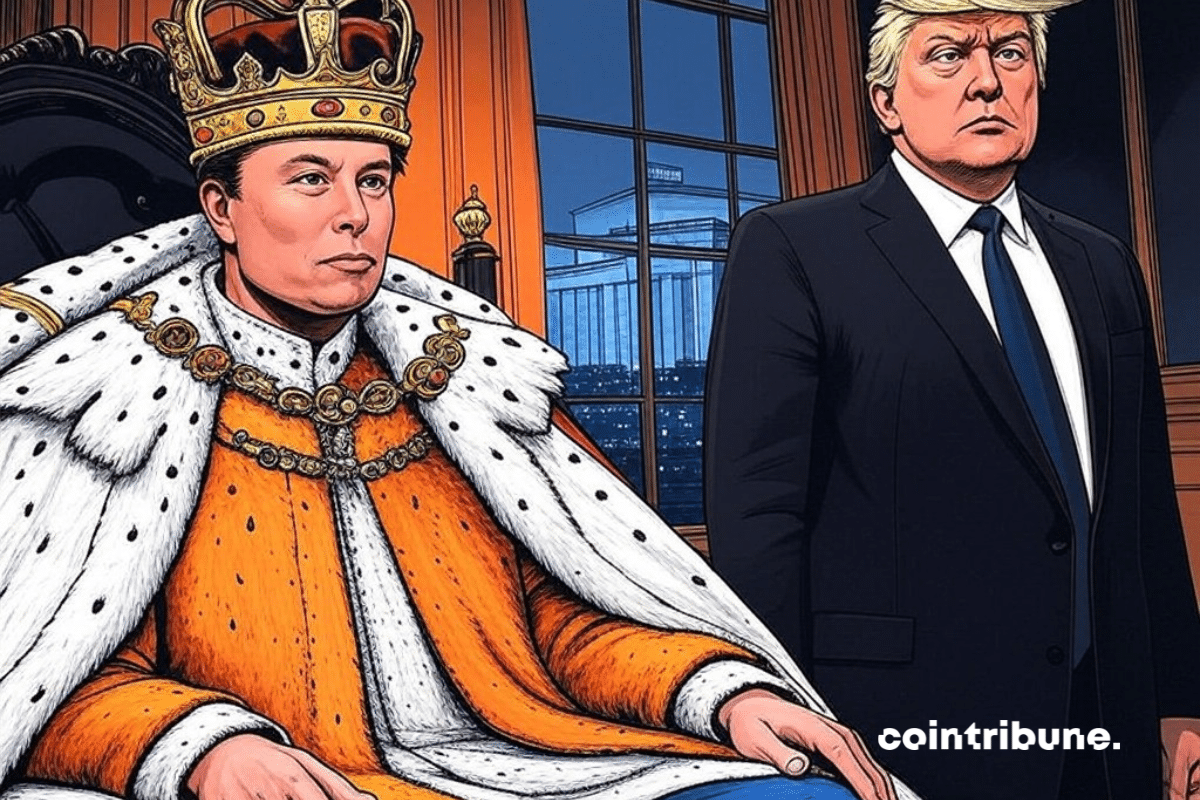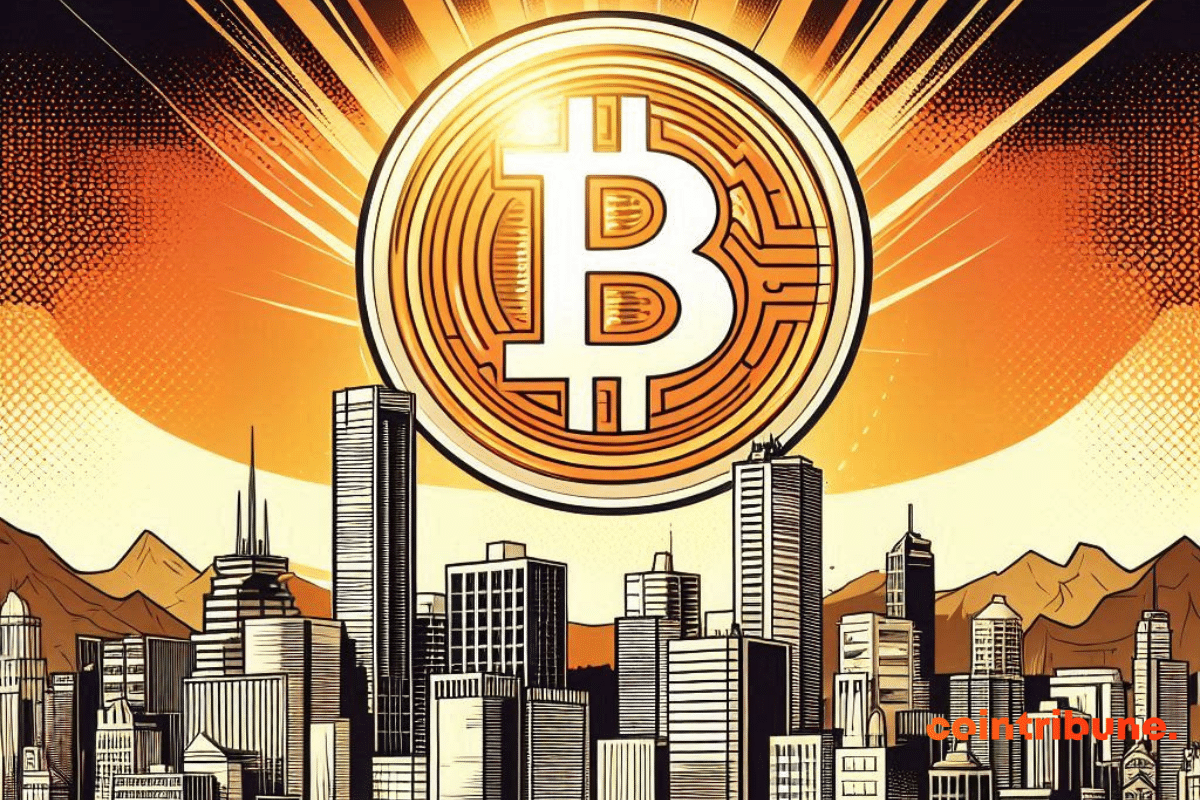While economists count illusions, Bitcoiners sense the truth. False data, weakening dollar: a new monetary dogma is being born before our eyes, far from official reports.
Inflation
Binance is giving away bitcoins, traders are balancing between euphoria and price headaches, and the CPI hovers like a sentence. The question remains who will suffer: the bulls or the bears.
Four consecutive red months for ETH. A slow, silent hemorrhage, where each absent transaction digs a little deeper into the grave of an asset in search of a second wind.
All eyes are on the PCE index, a barometer of inflation in the United States. Due on March 28, this figure could trigger a upheaval in risky asset markets. Bitcoin, in the crosshairs, could be the first beneficiary or the first victim. In a climate of geopolitical tensions and monetary uncertainties, this publication represents a decisive test to gauge speculative appetite and the strength of the bullish momentum in cryptocurrencies.
Powell, the guardian of the threshold, shapes the moment. Frozen rates, blurred hopes. The economy wavers, suspended between the fire of inflation and the ice of slowdown. The markets shiver.
As the U.S. Consumer Price Index (CPI) shows a slight decline in inflation, Bitcoin holds its breath. At 3.1%, the number is below expectations, but the king of crypto paradoxically plunges from $84,000 to $83,000 in just a few hours. A paradox? Not really. Between hopes for interest rate cuts and political maneuvering, the landscape is becoming more complex. An analysis of a scenario where Bitcoin, lying in wait, could surprise the markets.
The EU defends its economy against new American sanctions. We provide all the details in this article.
The American economy is going through a turbulent phase. Between rising inflation and a marked slowdown in growth, a long-forgotten specter resurfaces: stagflation. This phenomenon, which combines economic stagnation and rising prices, evokes the crises of the 1970s. Today, Donald Trump's new tariff policies rekindle fears of a return to that time when growth was stalled and purchasing power was eroding rapidly. The American president's decision to impose heavy taxes on Chinese, Mexican, and Canadian imports raises many questions about their real effects on the economy. As the Federal Reserve is pushed to its limits, markets are wavering, and businesses are concerned about the repercussions on their profitability.
The United States has taken the bull by the horns both economically and geopolitically. Many things are going to change and, in the end, bitcoin will find its way.
The figure has startled the markets: inflation in the eurozone was set at 2.4% in February, according to Eurostat. A slight decrease, indeed, but enough to reignite the debate on the European Central Bank's (ECB) next moves. Between cautious optimism and geopolitical clouds, the euro wavers on a tightrope. Behind these percentages lie contrasting realities: declining energy, resilient services, and a Germany that holds firm. An analysis of a somewhat muted economic landscape.
Stock Market: spectacular rebound of the markets. Europe is coming out on top while Wall Street plunges! The details in this article.
France votes on a budget, the French express distrust: 80% predict collapse, 61% no longer even hope for themselves.
While the Fed hesitates between caution and action, inflation runs rampant, and crypto wavers, poised for a week of financial roller coasters.
February 12 and 13, 2025, will be marked as two particularly difficult days for Bitcoin, which had to face a double piece of bad news on the American inflation front. The queen of cryptos, which had already fallen below $95,000 on Wednesday, continues to struggle to maintain this critical level.
Like a cowboy drawing his six-shooter, Trump unleashes reciprocal tariffs, awakening old economic ghosts and sowing panic for Bitcoin in the stock markets.
The upcoming release of inflation data in the United States could be a key factor for the price of bitcoin. According to a recent report by 10x Research, a decrease in the Consumer Price Index (CPI) could trigger a new bullish rally, bringing BTC closer to its historical highs.
Donald Trump unveils his radical strategy to counter the monetary ambitions of the BRICS. In response to their proposal for a common currency, he threatens to impose 100% tariffs against any country that adopts it. This tough approach masks secret negotiations that could reshape the global monetary order.
Under the reassuring glow of the CPI, Binance ignites: Bitcoin captures 500 million in two hours, crowning the crypto with a new hope.
The crypto market is experiencing unprecedented excitement. Indeed, Bitcoin, the undisputed leader of the sector, is nearing the symbolic threshold of 100,000 dollars, a level that signifies much more than just a simple increase in value. This ascent reflects the evolution of the global economy, where cryptocurrencies hold an important place in the portfolios of investors seeking alternative assets. Boosted by favorable U.S. economic data, notably an apparent control of inflation, this progression provides insights into the opportunities and challenges of a constantly shifting market, amid optimism and uncertainties related to fluctuations in traditional markets.
After reaching a historic peak in December, Bitcoin is undergoing a brutal correction, losing nearly 10% of its value in just a few weeks. This drop cannot be solely explained by a simple market cycle, but by a tense economic context. Persistently high U.S. inflation reduces the Federal Reserve's (Fed) maneuvering room, delaying hopes for rate cuts. This situation increases the pressure on risky assets, including Bitcoin, which sees its appeal diminish against a rising dollar and increasing bond yields. The imminent announcement of the Consumer Price Index (CPI) on January 15 could further accentuate this trend. According to Steno Research, inflation exceeding expectations could trigger new liquidations, potentially pushing BTC below $85,000. However, the danger does not come solely from macroeconomic data. The Bitcoin derivatives market remains overheated, fueling an excess of leverage that increases volatility. Amid economic uncertainties and the fragility of speculative positions, crypto operates in a zone of instability where each economic announcement could provoke a significant movement.
Financial markets hate uncertainty, yet the global economy is entering a period of instability. As we approach 2025, fears of economic slowdown, inflationary pressures, and political uncertainties are multiplying. Kristalina Georgieva, Managing Director of the International Monetary Fund (IMF), warns of "headwinds" and "divergences" that threaten global economic balance. Europe is struggling, the United States is surprising with its resilience, China is facing deflationary pressure, and Brazil is battling inflation. Behind these disparities, another concerning factor is the erosion of investments in education, which hampers innovation and long-term growth. As the IMF prepares to release its updated report, one question remains: do these economic fractures create an irreversible divide, or do they foreshadow a new world order?
The evolution of the price of bitcoin in 2025 will depend on three main parameters: macroeconomics, geopolitics, and bitcoin's ability to attract investors.
Between Trumpian euphoria and the cold mechanics of the Fed, bitcoin swings, a fragile king of a kingdom of uncertainties.
Between a provocative Trump and an inflexible Fed, the economy wobbles. Interest rates rise, prices soar, and nerves fray.
Inflation in the eurozone continues to receive close attention as markets monitor the release of December's figures. According to FactSet estimates, consumer prices are expected to rise by 2.4% year-on-year, up from 2.2% in November. This increase, although moderate, raises questions about the path the European Central Bank (ECB) is set to take. On one hand, some investors are betting on a rapid monetary easing, convinced that inflation will gradually return to the ECB's target of 2%. On the other hand, the sustainability of underlying inflation at 2.7%, fueled by rising prices of services and food products, urges the central bank to exercise caution. As the ECB prepares for its first meeting of the year on January 30, the balance between supporting the economy and controlling prices looks particularly delicate.
Elon Musk is shaking Washington. Between his influence on social media and his hundreds of millions of dollars in donations, Elon Musk is increasingly establishing himself as the true master of the White House.
Amid whispers of inflation and hopes for growth, the Fed is reshaping its horizons. Powell, with caution in hand, challenges a nascent economic storm.
Faced with the icy winds of inflation, Vancouver weaves a digital web: bitcoin, a bold weapon, guards treasures against the monetary storm.
The Russian economy is going through a period marked by strong tensions, sustained inflation, and economic challenges related to the war in Ukraine. In this context, the Central Bank of Russia (CBR) is considering a decision that could reshape the national economic landscape: another increase in its key rate, already set at 21%, an unprecedented level for two decades. This measure aims to curb the rise in consumer prices, estimated at 8.5%, which is double the official target.
As the war in Ukraine drags on, the economic consequences for Russia are beginning to be felt more acutely. Initially noted for its resilience against one of the most severe sanction regimes in modern history, the Russian economy today shows clear signs of fatigue. Inflation is accompanied by soaring interest rates. At the same time, the fragility of the ruble, which is in constant decline against the yuan, reflects an increasing dependence on China, Moscow's main trading partner.




